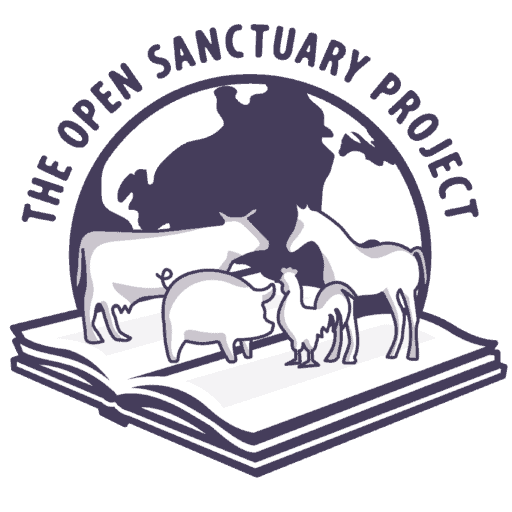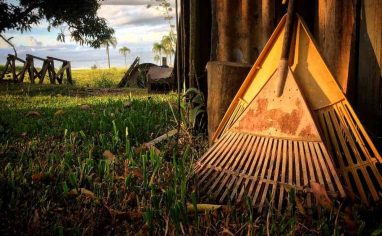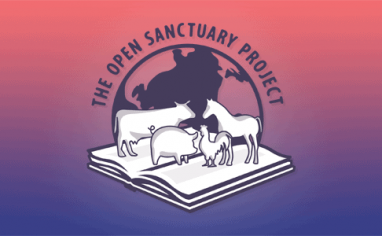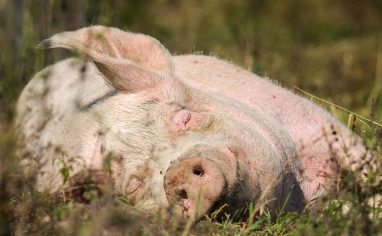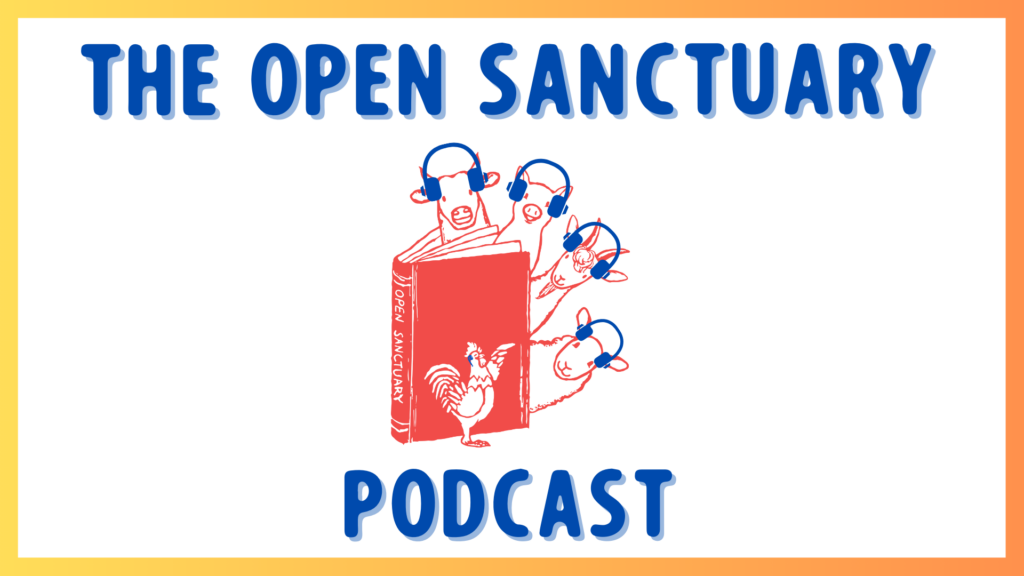
Subscribe To The Open Sanctuary Podcast
If you’d like to get the latest episodes of The Open Sanctuary Podcast, you can subscribe for free on all Podcast platforms, including Apple Podcasts and Spotify!
Episode Notes
Research Specialist Amber and NonprofitA non-governmental organization whose primary purpose is something other than selling goods or services. Specialist Julia talk about donkeys! Amber explains some of the physiological, behavioral, social, and nutritional needs differences between horses and donkeys and how these impact what caregivers must consider in their day-to-day care of these individuals. We also talk about mules and the traits that make them different from both their horse and donkey parents!
—
This Episode’s Referenced Open Sanctuary Project Resources:
- Donkeys: How We Got Here
- Donkeys Are Different: Addressing Their Unique Needs
- Donkeys Are Different Infographic
- Hello Burro Buddy! The New Donkey Arrival Guide
- Creating A Good Home For Donkeys
- How To Be Safely Around A Donkey
- Techniques And Practices Necessary For Responsible Donkey Care
- How To Conduct A Donkey Health Check
- Potential Donkey Health Challenges
- Things That Are Toxic For Donkeys
- Creating An Enriching Life For Donkeys
- Behavior 101 For Animal Sanctuaries
- How Donkeys Get Along With Different Species
- Marvelous Mules: Special Care Considerations
- Marvelous Mules: Tips For Your Animal Sanctuary Infographic
- When It Rains It Pours: Rain Scald
- Hair Coat Properties Of Donkeys, Mules And Horses In A Temperate Climate
Episode Transcript (Auto-GeneratedThe following content was transcribed through an automated process and may contain transcription errors or misspellings.)
Amber Barnes: Hey everyone, we’re back again. I’m Amber, the research specialist here at Open Sanctuary Project. I’m super excited about the topic we’re covering today. We have a resource called Donkeys Are Different. And as you may have guessed, that’s the topic of our resource. So, we’re going to talk about how donkeys are different. I am here with Julia, our lovely nonprofit specialist, and more. She’s going to join me today and ask some questions she has about the differences between donkeys and horses. Mules may make an appearance, too. So, okay, Juliet, tell me a little bit about where you’re coming from in terms of donkey equine experience, and if you have like any starter questions for me.
Julia Magnus: Oh, I have so many questions. I’m so happy to be here with you today, Amber. I don’t know a whole ton about donkeys. So, I’m really excited to talk about them and learn more. And I, I will say when I first started learning about and visiting animal farmed animal sanctuariesAnimal sanctuaries that primarily care for rescued animals that were farmed by humans., I was kind of surprised to see so many that were caring for donkeys. And I guess I—it’s maybe I never really had thought about them as a species that were in need of rescue as much as farmed animalsA species or specific breed of animal that is raised by humans for the use of their bodies or what comes from their bodies. who are exploited for food, maybe like pigs, cowsWhile "cows" can be defined to refer exclusively to female cattle, at The Open Sanctuary Project we refer to domesticated cattle of all ages and sexes as "cows.", chickens. One thing that I learned that really surprised me when I was meeting a herd of many donkeys at a sanctuary I was visiting, the sanctuary operator was telling me that one of the ways that donkeys are often exploited in a farm setting is that they are used as as guardians for other animals, which—
Amber Barnes: Yeah, I didn’t know that. Yeah. No, that is not uncommon. And one of the things that’s interesting about that is it kind of conflicts usually with a donkey’s natural needs for having that companionship with another donkey because often there’s just a single donkey. You don’t usually see many donkeys in that position, but that—that’s definitely something you’ll come across. You know, there’ll be a rescue and they’ll be like, “Well, we have—we’re rescuing all of these individuals and also, you know, all these goats and sheep here and there’s a single donkey and they decide we’re going to—okay, we’re going to help this donkey.” But like, wow, maybe they have horses, but they are—they will soon find they are not—they are not the same. So, but that is one of the ways that they are used—are used a lot around the world as a working equine. There’s a lot of exploitationExploitation is characterized by the abuse of a position of physical, psychological, emotional, social, or economic vulnerability to obtain agreement from someone (e.g., humans and nonhuman animals) or something (e.g, land and water) that is unable to reasonably refuse an offer or demand. It is also characterized by excessive self gain at the expense of something or someone else’s labor, well-being, and/or existence. that’s happening all over the place for donkeys that a lot of people don’t know about, even, even actually for milk and some other unpleasant things. We don’t have to go into like the details about, but they are definitely exploited for many of the things that you can think about for farmed animalA species or specific breed of animal that is raised by humans for the use of their bodies or what comes from their bodies. species. It’s just not as common in all those ways in the States. So, it’s new to some of us, you know, about that. But yeah, they’re definitely—they’re all over the place and they—they find their way to farmed animal sanctuaries fairly often.
Julia Magnus: Yeah, I was surprised and, and I was thinking about it and I was like, you know, I just horses kind of made sense to me in the context ’cause you can think about horses pulling carts or horses who are ridden, horses who have been through a lot of things, but donkeys kind of surprised me. And I imagine that if you have that rescue situation that you’re describing where all of a sudden you’ve got a group of animals and then there’s a single donkey, it might be a surprise to whatever organizations are working on the rescue and they might be like, “Huh, okay. Well, donkeys are great. Let’s take a donkey. How different could it be from horses?” So, I think that’s kind of why we’re here today.
Julia Magnus: I feel like—
Amber Barnes: It is.
Julia Magnus: Yeah. And that’s why you wrote a whole resource on this subject. So, maybe it might be helpful for us to talk about some of the ways that donkeys and their needs differ from those of horses and what are some of the ways that day-to-day care might differ between horses and donkeys. There are a number of differences. We’re going to cover some of those basics here. I mean, like what—what’s the first thing you think of when you think of like a donkey?
Amber Barnes: Well, first of all, the ears. The iconic donkey ears, right?
Amber Barnes: Always the ears when I ask.
Julia Magnus: Mhm. Mhm. It’s always going to be the ears and the tail is different and the coat looks different.
Amber Barnes: Absolutely. Absolutely. Going into that, those are like all like physical kind of descriptors that are different. Horses generally have like shorter ears. Their tails, you know, have long flowing hair a lot of the time. I’ve seen a few horses with little not a whole lot going on there, but generally, you know, they’re—they’re a lot different than donkeys in those terms. And you mention like their coats. This is something a lot of people don’t know, and I didn’t know until I started working with them, that the hair in a lot of donkeys’ coats, it’s—there are differences between a donkey’s coat and a horse’s coat. So, their coat, like in a winter situation, is usually thinner and lighter than a horse’s natural hair and coat there. So, for that reason, the donkeys might need a little more access to shelter from wind and rain. It’s interesting that we’ve done studies that have showed how the hair works. So like the different layers kind of of hair and how donkeys don’t have this extra and so they can get kind of soaked with rain or it could be a little—little harder for them to tolerate certain climate issues. Horses should also always have access to shelter as well. It’s just something to think about. But one of the big things that is so important that it’s going to come into play when you’re caring for donkeys is noting that you’ll have an equine vet that can help you, obviously, and they’ll know this, but it’s important to note that there is a significant difference between how much sedative or anesthetic a donkey will need compared to a similar sized horse. They will usually require significantly higher doses compared to a horse their size. So that is like something that is a huge thing that comes into play as far as their health is concerned. And another physical thing is donkeys, in addition to like ponies and miniature horses, they’re more prone to developing hyperlipemia, which can be very serious. It can be fatal with donkeys particularly in regards to extreme stress if they lose or they’re being separated from a companion. They can develop this and it—it could be very serious. So that kind of ties us in a little bit into like some of their social needs. We know that both horses and donkeys are social, but there is like a particular sensitivity with certain donkeys of being separated from a companion. So, it is very important whenever possible to have their companion with them. They have to be seen by the vet or something or if they have to be separated, having them share their fence line, things like that. Now, that’s something you should practice ideally for everyone that is social and has a companion or companions, but it’s just important to make note of specifically with donkeys considering they’re more prone to developing the serious condition.
Julia Magnus: That’s so interesting because I, I, I always thought of them as being sort of similar socially and behaviorally to horses, although I think that isn’t there kind of a common stereotype that donkeys are a little bit stubborn or something like that. But I—one thing that I remember seeing you write and I saw it in one of your donkey resources as well as in your behavior 101 amazing resource that you just recently published was an—it—it was basically a comparison between donkey and horse behavior and it kind of stems from where they come from. There’s also a resource on where donkeys came from. We’ll have that in the show notes, but all those resources will be in the show notes for your—for their perusal. But I would love it if you would share that anecdote ’cause I was fascinated to read that. I had no idea about that.
Amber Barnes: Absolutely. And so if you are—if you’re accustomed to working with horses, obviously we all know and we always want to make sure that we highlight that everyone is an individual, right? Like we have as species, there are certain things that there are generalizations we can make about behaviors and, you know, needs, nutritional needs, things like that. Everyone is still an individual. So when I say this, you know, maybe you have like a horse or a donkey that doesn’t, you know, behave in this way, and that’s—that’s okay. You know, they’re—they’re doing their thing and there’s a lot of reasons for that. But like, in general, how horses and how donkeys evolved is different, which has made their behaviors different as well in response to certain things. So, I’m sure if anyone has ever been around horses long, they have seen the dreaded plastic bag in the wind flying down like the road or something or past them and the weird horse resident, you know, will just say like Daisy is like, “Nope.” And like, just books it, just like completely, like, I don’t know where I’m going. Uh, but I’m going and I’m going fast. Uh, so that is something that they actually evolved to do. So, while sometimes where donkeys may be labeled stubborn, horses sometimes are labeled as like silly or, you know, like I’ve heard people say that like maybe they’re not smart or something like, “Well, no, they’re smart. They’re doing exactly what they needed to do in the environment they evolved in.” And for them, if there was a predator, if there was a threat, the best thing for them to do was to run because they evolved more in areas where there was larger open spaces. And, and so they could be in larger groups. So they can often just get away like running is—is the way to get away, right? You know, and then you have donkeys on the other hand and they have evolved in more rocky, desert type, you know, arid conditions where, you know, there isn’t always this open setting where they can just run and when there’s a threat. No, there’s like the topography is, you know, rocky. So they—they wouldn’t be able to just keep that speed and they wouldn’t be able to stay in large groups because there’s just not the room in the same way.
Julia Magnus: That makes sense.
Amber Barnes: And so for them, if there is a threat, they would be more likely to band together in their little band and stand their ground. So they might see this plastic bag and you might notice body language like holding really still, ears forward and really, really kind of giving the side eye to that bag to check it out and, you know, just be like, “Are you a threat?” You know, like, “What’s going on here?” But that’s—that’s both of those things are things that make sense for them and sometimes we think we—we compare it to humans what we might do, and that doesn’t make sense. Daisy’s being smart, you know, with what her evolution has told, “This is how we remain safe is I run.” And then you have like Doris the donkey on the other hand that’s like, “Wait a minute, this is how I stay safe. I keep my eye on it and I try and I hold my ground, figure out what’s going on.”
Julia Magnus: Oh yeah. I mean, I find that absolutely fascinating and it actually reminds me of something. When I was a kidA young goat, God, there were all these series of books about, mostly they were horse books, like Misty of Chincoteague, those kinds of things. But there was one, Brighty of Grand Canyon, which was about a donkey. And yeah, and I remember reading about Brighty. Brighty befriended a human. Brighty protected the human from a bandit or something like that. And Brighty was living in this rocky space. And so you can see—I don’t know if that’s where donkeys are actually from, but Brighty and there, I think there are donkeys that live kind of feral in the Grand Canyon. But it’s you could see how that behavior might evolve from that context versus the horses. And yeah, it’s so interesting. And then the other thing is, is it’s also worth noting, as we always try to do, that relationality to humans is not a criteria on which we believe animals deserve consideration or care. Yeah. It’s they are sentient beings. It doesn’t matter how smart we consider them to be relative to ourselves, they deserve care and consideration.
Amber Barnes: Yeah. Absolutely. That’s—I always love when that point is made because that’s, you know, ’cause that isn’t the point, right? You know, like that is not how someone should be valued is based on how close they are to human or human intellect or, you know, we like—we would make terrible fishers. So, so I, you know, we like to brag a lot, but, you know, we wouldn’t do so well in a lot of cases. So, yeah, so I just want to touch back on that is, so, donkeys are often labeled as stubborn. However, what they’re often doing is studying the situation because they’re unsure of it. And so, they like to think things through. They like to understand what’s being asked of them. And they’re not just being stubborn just to be stubborn. They’re unsure. They’re uncertain. And they need reassuring. They need to see that this is a safe or at least neutral thing that you’re asking of them. So, that’s—that’s really important. So, I’m glad that you brought that up.
Julia Magnus: Well, I’m, I’m glad you—you explained that because it seems like it would have a tremendous impact on how caregivers work with them on a day-to-day basis.
Amber Barnes: Yes. Yeah, absolutely. Also, for safety issues, when you consider caregiverSomeone who provides daily care, specifically for animal residents at an animal sanctuary, shelter, or rescue. safety specifically, you always want to be aware of, you know, situational awareness, like where you’re standing, how someone’s feeling around you, but knowing that Daisy might take off really quick. And that doesn’t mean you’re not super aware of donkeys. That’s the other thing is donkeys don’t always show like things like discomfort or they’re experiencing like a serious medical issue as much as a horse might, like say colic. They’re rolling around in like obvious distress whereas you just might notice a donkey standing strangely and once you notice it’s usually really serious. So those are—yeah, it’s really important to—to keep a close eye because small changes in a donkey’s demeanor can mean big things. And of course that can be for anyone, any species, any individual, but in general as a species, donkeys tend to hide discomfort longer than horses. So it’s probably worth pointing out that we have a number of resources on the questions of donkey health challenges, how to conduct a donkey health checkThe Open Sanctuary Project uses the term "health check" to describe health evaluations performed by caregivers who are not licensed veterinarians. While regular health checks are an important part of animal care, they are not meant to be a replacement for a physical exam performed by a licensed veterinarian., and even one on how to be safe around a donkey. All of these will be listed in the show notes. So, if you want to learn more about any of these particular subjects, you can hop down there and check out all of those resources.
Julia Magnus: That’s—Yeah, that’s great. I love that we have that.
Amber Barnes: Well, thank you for having that there, Julia.
Julia Magnus: Thank you for writing them because that was a whole thing. We’ve even got like the—Oh god, I remember how long you were spending on the toxicity resources.
Amber Barnes: I can’t even.
Julia Magnus: Let’s not. Yeah, that was a lot. Those resources are something else, but I hope that they’re helpful for everyone. So, yeah, I’m—I mean, I find them helpful. I refer to them pretty regularly and there is one that’s specific for donkeys. So, that’s hugely helpful if you have questions about that.
Amber Barnes: So, you mentioning things of not to eat, but also like while donkeys, horses, zebras, they all have a common ancestor, they divided off, right? So, that’s how we have like all these behavioral differences, these physical differences, all—all of this. And then we mentioned donkeys evolving in more arid, less hospitable regions in terms of, you know, availability of resources. They evolved in a pretty neat way to where they can thrive on diets that like a horse would not be able to get enough nutrition. So, they have this incredible digestive system that allows them to digest like rough plant matter, like really fibrous, you know, things that others would be like nothing, you know, and they also eat more shrubs, tree matter. These things generally have less nutritional value, but since they digest food more slowly than horses, this allows them to absorb more nutrients from this poor quality plant matter. So, a horse at your rescue, we’re just going to say two adult, um, generally healthy individuals because obviously if you add some other things in there, factors in there, it changes everything. But a horse is doing great in this pasture. There’s lots to eat. There’s some good grasses. And if you also have donkeys on that pasture, you might need to pay a little extra attention because they don’t need all these lush green pastures. They are at a risk of exceeding their nutritional requirements. That can actually cause some health problems for them. It can for horses as well. So, and some rumen issues. So, it’s important to take note on that. But it is the main thing to know. Donkeys can do more with less. There are some spaces where you can feed donkeys certain types of straw and it’s actually like that’s okay. And ’cause I know people have seen that before and been like, “Oh, no.” Well, if it’s the right kind of like straw and in the right situation, that can actually be okay for them as long as their well-balanced diet and nutritional requirements are met. So that is a big difference because you don’t need to be feeding horses, you know, just the straw. So because they can’t—they can’t do a lot with that. So yeah, so that’s—that’s a big—that’s a big difference right there. Daily care right there. Like, where are they living or do they have pasture? What are you giving them? Like, they don’t necessarily need as much of the super lush, you know, like cut hay or whatever as some horse residents might need. So, yeah.
Julia Magnus: Can I ask you another question? It’s kind of circling back. So, if we’re talking about what they need and we’re talking about nutrition, you mentioned we talked a little bit earlier about their physical differences from horses and one of the things we talked about was how their coats are different and I know you’ve also done a resource on rain scald.
Amber Barnes: Oh, yeah.
Julia Magnus: Yeah. I hear that and anyone who’s cared for like equines probably has made that sound if they live in a rainy environment. So, yeah. Yeah. So, I’m wondering like—I know I’m kind of circling back a little bit, but is there a difference in like how you would provide care for—I mean, you mentioned shelter like that—the obviously both need shelter, but that there may be a more of a pressing need when it comes to donkeys due to their coats, and is rain and how does rain scald play into that?
Amber Barnes: Okay. Well, one thing is, well, rain scald is nasty if you, you know, if you don’t know what it is. It’s good. That’s probably good because you probably haven’t, you know, seen it in your area, which is wonderful. But basically, this can be for equines, camelids, ruminants. There’s usually different names depending on the actual species, but basically it’s about the bacteria that affects, you know, certain areas of the body. So it basically lives on the skin, but when there’s a lot of moisture in the air, it enters through tiny breaks in the skin. So, like even something like a fly bite, that can allow that bacteria to enter. So that’s why, you know, it’s like rain rot is like there’s so much moisture. So, if you’re living in the Pacific Northwest or something, this is something that you might run into quite a bit. Whereas if you’re in certain other areas that don’t get a lot of rain, you might not even be familiar with it. But if you are, yeah, that—that is—that is a thing. And so it is really important to take care with anyone that’s in any of those species when—if you live in a really rainy environment. Now, horses, that’s the one thing is like they have different areas that are affected more like—like donkeys are going to be more affected in their shoulders, their back, their rumps, or their lower limbs a lot, which you may have heard of. It’s like called mud fever. That’s—that’s what it’s called when it affects the lower limbs like that. It’s all the same kind of thing, but just the area where like horses are more likely to get some on the top of their head and their neck as well as these other areas. So, it is really important to make sure you have dry shelter, like that is 100% super important. There are also coats, waterproof coats that you can provide. Just also have to make sure that no one’s sweating a lot under them because you could run into similar problems and other problems that not rain scald, but so you got to make sure you’re practicing good coat hygiene, so to speak. But yeah, so basically it’s the same for everyone. It’s just really keeping a close eye on those donkeys that are just out there and get rained on and miserable or something. They really—they need some—they need that shelter and they need access. And since they can also get it more commonly, I mean horses can too, but more commonly on their lower limbs. That means they need areas where there’s dry ground. So like standing mud and things like that, that’s going to—that’s bad news. So do what you can to help them keep those areas drier as well.
Julia Magnus: I’ve got like a followup. What about winter coats?
Amber Barnes: Basically, the hair length is generally not as long as horses and like the thickness is not quite as—as much like as horses can get. So, they—they can vary with that which means that they can also, the coats in like—in the winter they might, you know, be a little—be a little chilly, could use like maybe a little extra protection. The interesting thing here, okay, donkeys’ hair coats do not—I’m reading straight just so you know like from a—it’ll be in the show notes but basically it’s a paper that’s called ‘Hair Coat Properties of Donkeys, Mules, and Horses in a Temperate Climate,’ and so donkeys’ coats, they don’t change as significantly across seasons. So the insulation is different, right? So they don’t grow a really thick winter coat generally, and so it’s generally a lighter coat, it’s a shorter coat, it’s a thinner coat a lot of times than horses and mules. Mules are generally in the middle. Okay. So like, in most ways they’re—they are the mix of, do you know, donkeys and horses. So they—they are somewhere in the range between the two and it varies a lot but basically, you know, you’ll have a horse that grows a really thick nice winter coat where you have this donkey that is not really getting that same protection. So, they also they don’t generally seem to be as adapted basically to those colder climates, those wetter climates as horses. So, just pay good attention. Make sure like if—if it’s really cold out, they might—someone might need a coat, particularly when you’re dealing with someone who’s older or maybe has a different like a health condition or something, but just have it in your mind that like Doris may not be feeling as warm as Daisy in the same temperature, in the same climate, in the same moment. So, paying attention to that is—is important. If anybody’s feeling real nerdy, just check out this paper and you can learn some specifics about it. It’s pretty interesting.
Julia Magnus: Now, because I am nerdy and you—you piqued my curiosity about another subject which we may—we touched on very briefly. Okay, so we’ve got donkeys, we got horses. What about—you know where I’m going? Our friends, the mules. Yeah, I, I, I was so excited um when that came out because I really didn’t know. And I think another maybe physiological difference that I didn’t know about that was different. I’m sorry if you hear um—I swear to God, I don’t have a torture chamber in the background. Those are my parrot friends. They have opinions ’cause they think mules are pretty marvelous, too. But yeah, I’m so curious about the differences between donkeys, horses, and mules.
Amber Barnes: Yeah. Okay. Well, like kind of an overall takeaway is that, well, a donkey plus a horse equals a mule. And so, you get kind of a whole range of those differences. Like, as far as like, you know, the hair coat, it can be somewhere in the middle. I didn’t talk about this, but, you know, donkeys’ hooves are very different than horses as well. And, and the shape of them is different. How they need to be trimmed is different. So that’s really important to know that you have a farrierSomeone who provides hoof trimming and care, especially for horses or cows who has experience trimming donkey hooves. So note that for sure. Now when it comes to mules, they are somewhere in between these two like with their hooves. So they generally look a little more like a donkey’s and a horse’s, but they—but they always still have some of those horse-like features. So I guess, I—we should put in—I’m actually working on a donkey hoof resource so we can compare it with our horse hoof resource and you can have a better idea and maybe I should just do a mini for everybody where it just shows the three so you can kind of get an idea. But basically I don’t know how to go into this without using visuals. So, but basically their hooves are—are different. Okay, we’ll go into that and then I’m going to do—I’ll do a resource later and maybe we can have another podcast that kind of focuses on that more also. So, interestingly enough, mules sometimes have smaller nasal passages compared to horses of the same size. And so, donkeys have smaller passages, which means that if you need to use like tubing, uh, it needs to be smaller for them to avoid any complications or discomfort. Nasogastric tubing is what I’m referring to. So, yeah, that’s—that’s an important thing to have on hand, right? So, you have that maybe on hand for horses you care for and it’s a larger size that sometimes this comes in handy when you’re dealing with colic-like things. You need to have some around as well for your mule and donkey residents that’s a little smaller. Talk to your vet about what they feel would be appropriate for your residents. So everything’s in between. Their—their coats are kind of in between. And, and one thing to note that I didn’t note earlier is like all horses aren’t the same, right? Like you have horses that have been bred in colder climates. You have horses that have been bred in quite hot climates and they do not have the same coat features all the time. So, I want to make sure I put that out there. Like, if you are caring for someone of Arabian horse descent, then their coats generally are not—it’s not going to be the same as like a Shire. So, when I’m talking this, don’t think Arabian. Think of a Shire when you’re thinking of winter coats because they’re not going to have that same—it’s not going to be quite the same, you know. So, like horse breeds vary a lot. So, I should—I should note that in there for everyone. So, if you—do you have a horse that was bred in warmer climates, you’re not like, “What is this person talking about?” So, but also a mule’s physiology works different. Their gut motility is a little different. Their metabolism—trying to think—how they use water is even been different like in their, you know, their body, how they compartmentalize it, how they conserve it. Mules and donkeys have slower gut motility. So that’s what we were talking about how they can do more with less. So something to consider with mule residents as well. Also, you know, like donkeys are highly efficient in water compartmentalization and conservation. So I’m looking over like this resource actually in marvelous mules where it’s like it’s reported that they can lose 20 to 30% of body weight and recover faster like once fluid is provided, just in the plasma volume is still maintained even with 20% dehydration. So I don’t know if that makes sense but basically they are able to like they’re not going to be—they can withstand, once again, they can do more with less, even water-wise, you know, but they always should have access to water all the time. So, mules, they have a—their metabolism is different than horses. They have a higher cellular water content. So, like all these like strange little things, but something like that can make a big difference in like their medication needs. So, that is that they might take the same medication as a horse resident, but they might need up to 50% more for sedation or something like we were talking about with like the donkeys. So, that’s—that’s a big—that’s a big difference. Also, nutritional stuff, it kind of comes into the same thing. A lot of it’s like not as much as a donkey because they have horse too, but like they’re definitely a little—they—they tend to be considered a little heartier in general than horses. But this is interesting because they have differences in their blood characteristics. The white blood cell count is significantly lower in mules and horses. So that sounds weird because you’re like, “Wait, aren’t white blood cell counts? We want to have those around to like fight off things.” But one of those theories is that mules might have larger white blood cells. So, that’s interesting. Look there. And I could go on, but it gets really sciency in a fun way if you’re feeling really nerdy, but probably a different podcast. So, but we could go into—do it, but, you know, at another time. But that’s kind of like just a few of the things. Same thing as so far as like, you know, pain. They’re probably more likely to show some signs of pain than a donkey, but less likely than a horse resident in general. Same thing when it comes to like fight or flight, all of that. You just don’t know. You really need to know your mule resident well to know where they lie on that spectrum. So, mules, they run the gamut of that spectrum and usually just kind of lie somewhere in the middle there.
Julia Magnus: Well, I feel like, I mean, there—it’s so many different—I—I just, I don’t know. I like the spectrum of difference between horses, mules, and donkeys. It’s so interesting to me to learn about and it’s a total nerd alert. There’s just a ton on our site if you’re interested in learning more about any of these things. And please definitely check out the show notes on that. Amber, what else do you—do you have anything else you want to point out about donkeys, mules, horses?
Amber Barnes: I would love to just say, uh, fun little fact that I think some people might find really interesting. So, if you are on your phone or at your computer, you might want to Google, of course there are, you know, standard donkeys and then you have mini donkeys that a lot of people know about, but you may not know about mammoth donkeys. So, for fun,
Julia Magnus: Okay, my heart just exploded.
Amber Barnes: Yes. So after this, for fun, you might want to Google Mammoth Donkey which is a breed. And yeah, and obviously we’re not like promoting wanting people to breed anyone because we don’t need that. But, but if you do look at some images, it’s pretty wild to see these really just—yeah, they’re mammoth. They’re mammoth. Just throwing that in there for funsies. So.
Julia Magnus: Oh my goodness. Thank you so much for sharing all of this. It’s so—it’s like fascinating to me and I feel like I learned so, so much about our donkey friends. As always, if you’re interested in learning more, you can check out our resources. If you do get—if you’re considering donkey residence, it’s good to talk to people who are existing caregivers of these wonderful creatures and get acquainted with them through other compassionate caregivers.
Amber Barnes: That’s a good idea. Yeah, I think that’s a wrap. So, I hope you all enjoyed that. And yeah, that was—that was fun for me. I hope it was fun for y’all.
Julia Magnus: Fun for me, too. Thanks so much, Amber, for sharing your giant brain.

Got A Podcast Idea? Contact Us!
If you have a topic or question you’d love to hear our staff address on The Open Sanctuary Podcast, please get in touch via our contact form!
